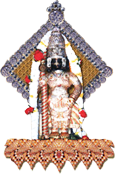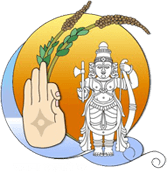Samana Hridayanivaha is the motto of this website. The Sanskrit phrase appears in the last part of Rugveda. ‘Let everyone’s heart and mind be alike in thought and deed to enable us to lead a harmonious life’ is the meaning of this simple phrase.
The Indian mythology says that Parshurama has created the western coast-land of South India. When the sea God started to erode the land, the saints of the region pleaded the Saint Parashurama to protect them. He threw his Parashu, which is a kind of axe, and ordered the Sea God to retreat. accordingly, the sea withdrew far from the western-ghat creating as fertile and created the costal land, which is famous as then land of Parashurama. Thus, the western coast of south India represents Parashurama.
It is said the ignorance, Karma, and desires are the root caused for the miseries in this life. An ignorant person may consider his body as his real self or identity. Due to this lack of knowledge, the demands of the body are considered as the demands of one’s self or demands of life instead of considering the demands of soul. So the body works hard to meet the desires of the body. When the work during the day failed to meet the demands of the body or desire, he started to work even at night. Caught in the vicious circle of ignorance desire and deed (karma), man moved away from God who is the provider of true bliss (Ananda). Escaping from this vicious circle, in order to realize Him and to have Moksha is the ultimate purpose of this life. The Mudra of knowledge signifies this. The five fingers of the Mudra suggest five concepts. The thumb finger signifies God or Super Soul, whereas the forefinger signifies the Jeevan or soul. The rest of the three fingers signify ignorance, desire and Karma respectively. This gesture implies the need of the soul to reject the above three, in order to reach and realize God. One can grasp the meaning of life through this Jnana Mudra like milking of a cow. It also represents the psyche of a Brahmin who prays for the welfare of the whole.
Knowledge is the soul and the customs are the ways of reaching it or body of the soul. Culture is the body of of this Knowledge. The greenery and the harvest of coastal Karnataka represent the rich culture of Brahmins of this land. The Shivallibrahmins lived close to nature by opting for agriculture. So they practice various customs through out the year, which are closely related with the changes in the nature.
The roaring sea symbolizes the native place of Shivallibrahmins, while the blue sky implies the greatness of their heart who follow the maxim VasudhaivaKutumbakam.
– Dr. Satyanarayana Acharya



Very good concept. Keep it up